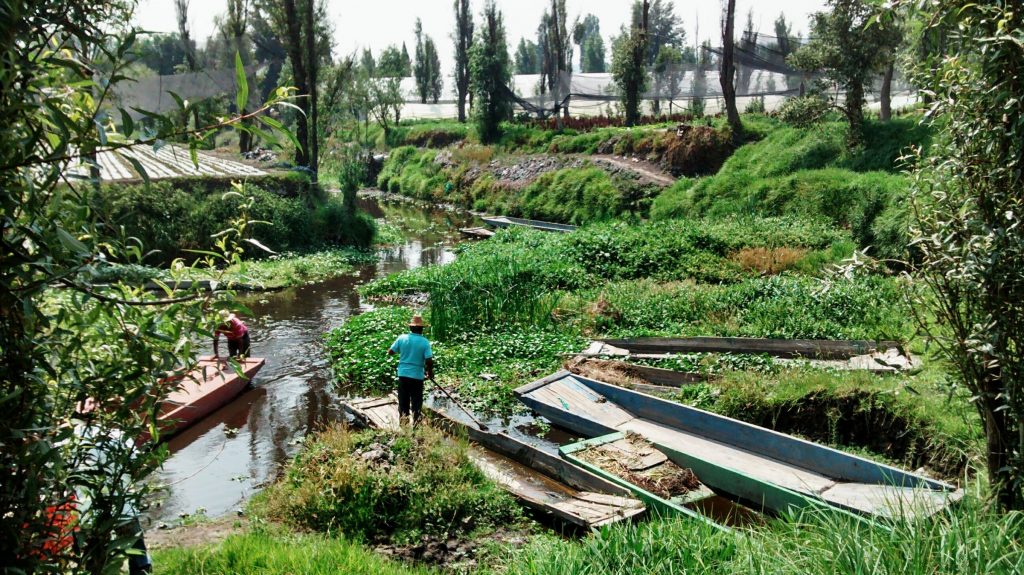
Throughout the course of history, human beings have developed a huge variety of agricultural methods. One of the earliest techniques was the slashing and burning of a forested area, a method that cleared space for crops and returned nutrients to the soil in a bio-available form. Other early farmers planted their crops in the flood basins of huge rivers (such as the Nile, Tigris or the Euphrates) taking advantage of the huge deposits of nutrients and water that these rivers would leave in their wake. As humans expanded into almost every corner of the earth, the ways we farmed became as varied as the different ecosystems and topographies that we found ourselves in. We began to shape mountains with terraces. We directed the flow of water with dams, dikes, basins, and aqueducts. Some of these techniques have proved to be ingenious ways of working with nature in a way that supports the growth of life, increases diversity, and provides a bountiful harvest for human beings. Others have proved themselves to be an ecological and human catastrophe, leading to the collapse of civilisations and the desertification of once bountiful ecosystems. In general, large centralised civilisation tend to overexploit the lands they depend on to exist, leading to degradation and collapse.
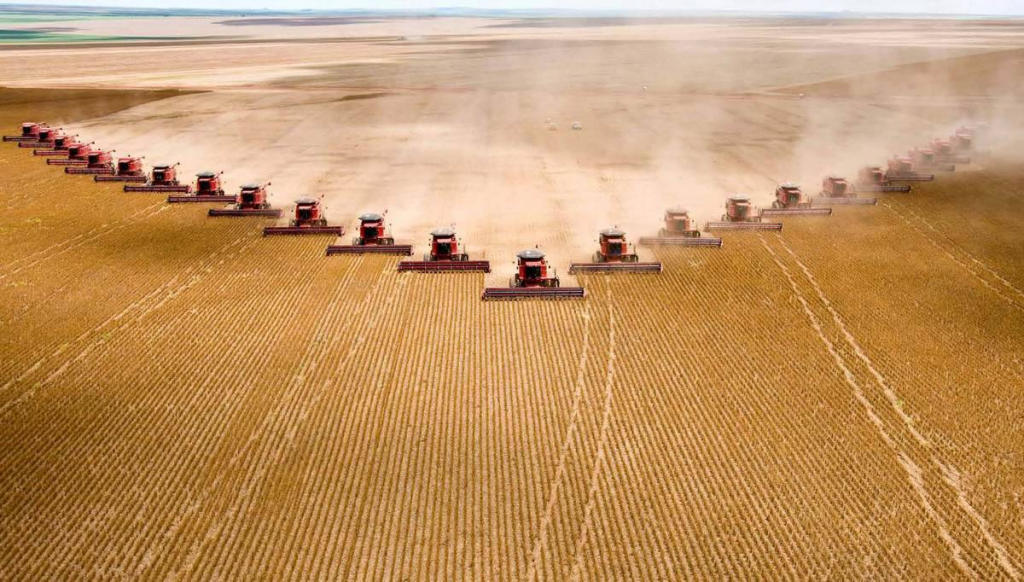
In this respect, modern society is similar to many of the large civilisations that came before it. Modern agricultural techniques and modes of social organisation lead to massive overexploitation of the soil and natural resources. Heavy machinery ploughs deeper into the earth than ever before, disturbing life underground and exposing it to harmful UV rays. The necessity of making money to cover the skyrocketing costs of farming means that we no longer work in cycles of cultivation/fallowing, leaving the land no time to recover. While the loss of fertility and degradation of ecosystems have been major factors in the collapse of complex civilisations in the past, many in modern society believe that this problem had been overcome with the creation of synthetic fertilizers. But instead of solving the problem of fertility, synthetic fertilizers exasperate it; preventing the growth of nitrogen fixing bacteria, nipping the natural development of soil fertility in the bud. The dangers of destroying the foundation of natures bounty (the soil) and making farmers dependent on factory produced, corporate owned, fertilizers and seeds, are pretty obvious. But these dangers are apparently outweighed by the fact that such developments are good for business.
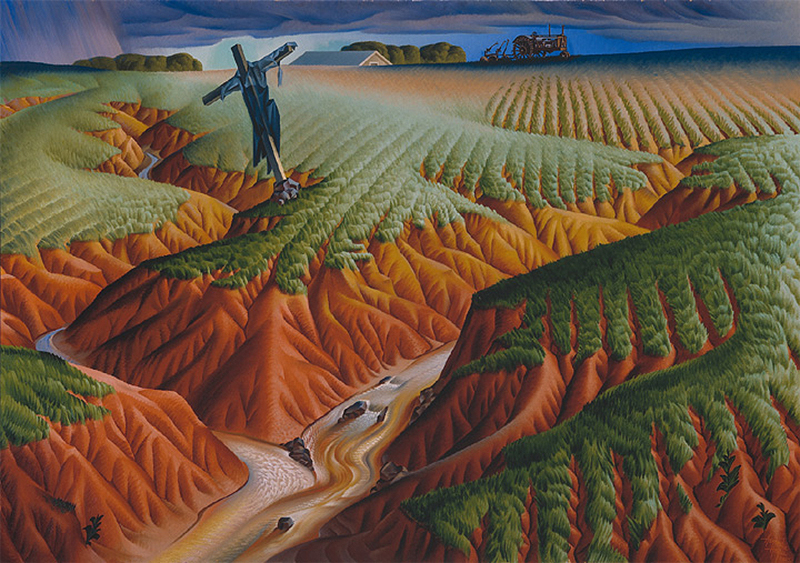
Exasperating the fertility problem is the fact that we now spray the land and our food with poison, not only poisoning the food food that we eat, but also killing the millions of plants, animals, fungi, and bacteria that make the earth fertile. Modern farming has created for itself a series of problems; the loss of fertile topsoil (with studies estimate that we lose around 1% of the total topsoil in the world every year)1, the collapse of animal populations (in particular insects) and the general massive global decline in bio-diversity, and the drying and desertification of previously fertile regions. When taken all together, our present crisis is of a different order of magnitude than previous ecological crises.
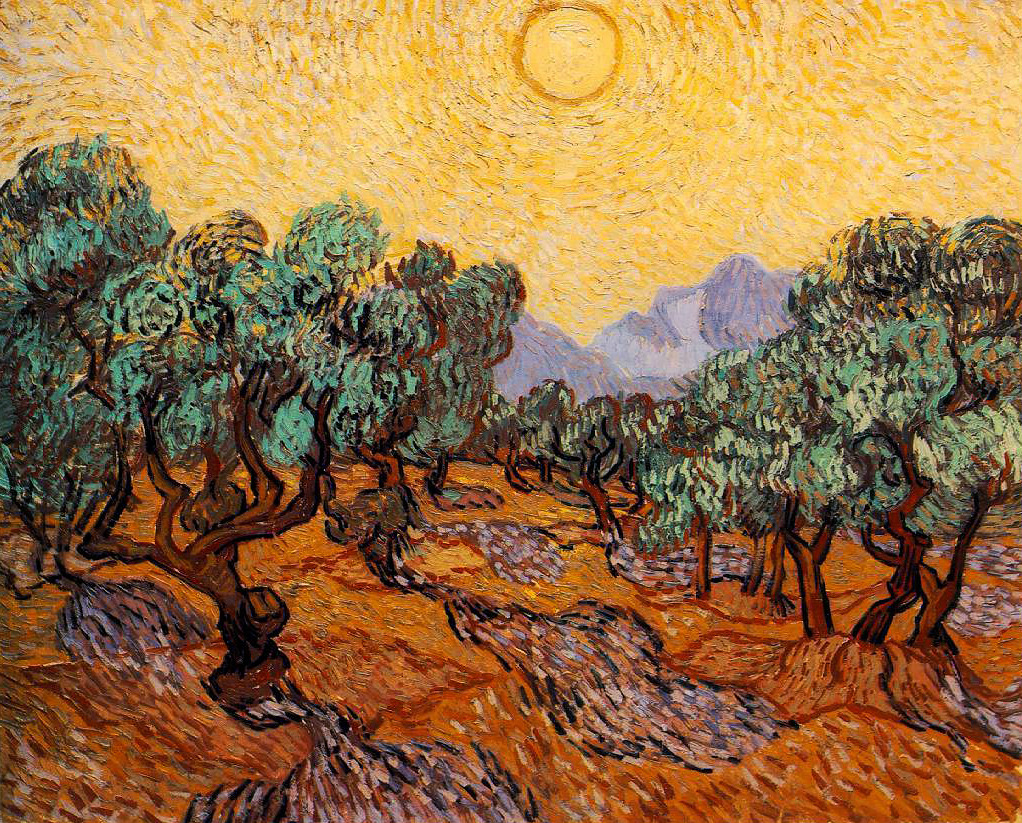
The time for a global transformation in agriculture is at hand. This is no longer a radical position. Despite the huge influence of agri-pharma conglomerates like Monsanto/Bayer, even hegemonic institutions like the UN are advising people around the world to abandon the techniques of industrial-chemical farming. The road to a form of agriculture that is both in harmony with nature, and can feed billions of people, leads in two directions – into the past and into the future. The future of farming is to be found in the many new methods of agriculture that are being developed and experimented with all over the world. Within this group of new methods, there exists a huge diversity of techniques, skills, knowledge and philosophies. While some methods developed out of spiritual traditions (such as the Zen inspired natural farming of Fukuoka), or intuitive knowledge and experience (such as the biodynamic farming), others take a more scientific approaches (such a syntropic farming, or permaculture). These new scientific approaches distinguish themselves from 20th century agricultural science by adopting a holistic understanding of farming – not only measuring the quantity of the harvest, or the profits per hectare of land, but also the vitality of the ecosystem, the effect of the agricultural methods on the surrounding communities, the quality of life of the farmer, and the nutritional value of the food produced. These new methods of farming have emerged from that mysterious source of human creativity; our capacity to the transform ourselves and our way of living to adapt to the ever changing circumstances we find ourselves in.
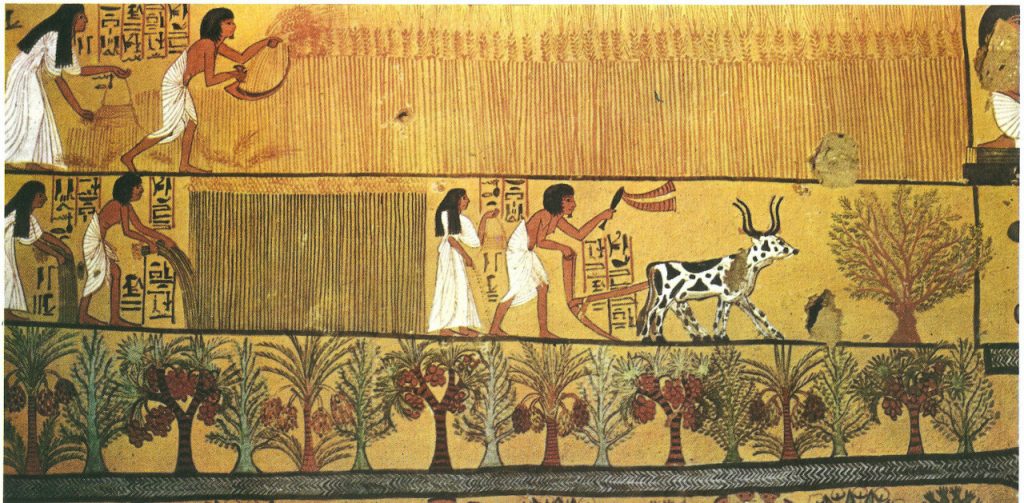
However, our search for a better future should not lead us to discard what we have already learned. Modern society has tended to fetishize the new, to pursue complicated solutions instead of simple ones, and to listen only to the word of scientists and discard the generational wisdom of all other cultures. But this attitude, as well as leading to cultural genocide across the world, is leading to our own ruin. Modern society is failing in our most essential task, the basis of our survival; feeding ourselves without destroying the ecosystems which sustain us. This should be the most basic landmark for how ‘developed’ we are as a society, because all the supercomputers in the world won’t save us if we don’t have anything to eat. For this reason, we need to look to other cultures, many of which have far more developed systems of agriculture than our own primitive system of modern agriculture, for knowledge and inspiration. While many centralised civilisations have experience similar problems of overexploitation that we are seeing today, not all of them did. The agricultural techniques developed by our ancestors were not all deforestation and desertification. Many cultures throughout the world developed ingenious methods to work with the land in a harmonious way – with human beings providing themselves with what they need and nature benefiting from intelligent land management. One such culture was that of the Aztecs, who developed a very high yield method of agriculture, perfectly adapted their surrounding, which allowed them to grow crops the whole year round.
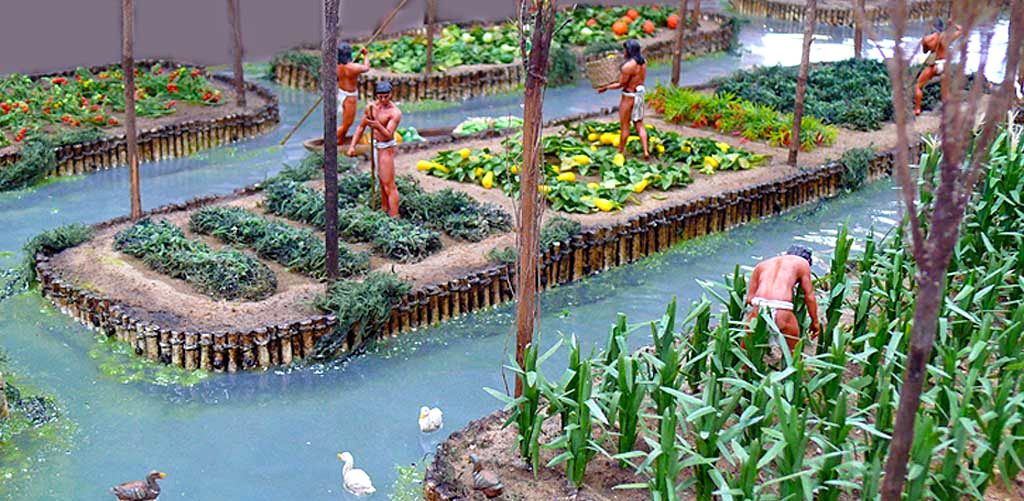
Chinampas are floating gardens, human made islands, that used the fertile sludge from the surrounding lake to create, not only one of the most spectacular cities of the ancient world, but also one of the most innovative and productive methods of agriculture of its days.
History of the Chinampa
When the Spanish first came to to the area of what is now Mexico City they were treated to a magnificent sight. After traversing the volcanic mountains of the Sierra Nevada, they arrived in the Mexican Basin; a huge valley with a huge series of lakes and lagoons covering about 1,500 square kilometres of the valley floor. The largest of these lakes was Texcoco, and in the middle of this lake was the capital of the Aztec Empire – Tenochtitlán – the imperial and ceremonial centre of Mesoamerica. With around 300,000 inhabitants, Tenochtitlán was far larger than any Europe city at the time, and the fact that this city was situated on an enormous lake, connected to the land by three huge bridges and an enormous aqueduct, made quite an impression on the Spanish. Bernal Díaz gave an account of the city;
‘Here we had a clear prospect of the four causeways by which Mexico communicated with the land, and of the aqueduct of Chapultepeque, which supplied the city with the finest water. We were struck with the numbers of canoes, passing to and from the main land, loaded with provisions and merchandise, and we could now perceive, that in this great city, and all the others of that neighbourhood which were built in the water, the houses stood separate from each other, communicating only by small drawbridges, and by boats, and that they were built with terraced tops. We observed also the temples and adoratories of the adjacent cities, built in the form of towers and fortresses, and others on the cause-way, all whitewashed, and wonderfully brilliant. The noise and bustle of the market-place below us could be heard almost a league off, and those who had been at Rome and at Constantinople said, that for convenience, regularity, and population, they had never seen the like.’
Tenochtitlán was composed of a central island (full of giant whitewashed pyramids topped by magnificent temples, as well as palaces, fortresses, and huge markets) surrounded by hundreds, if not thousands, of smaller islands, all connected by an extensive network canals. On these smaller islands were adobe houses and cultived lands. These islands were not merely built upon and cultivated by the Aztecs, but created by them from scratch – the chinampas. These chinampas formed the economic backbone of the Aztec empire and were one of the most unique methods of agriculture of any ancient society. While most ancient societies created large scale infrastructure to redirect water to plots of cultivable land (aqueducts, canals, wells, terraces, dikes, dams, etc.), the Aztecs took the opposite approach, creating plots of cultivable land in the vast waters of Lake Texcoco.
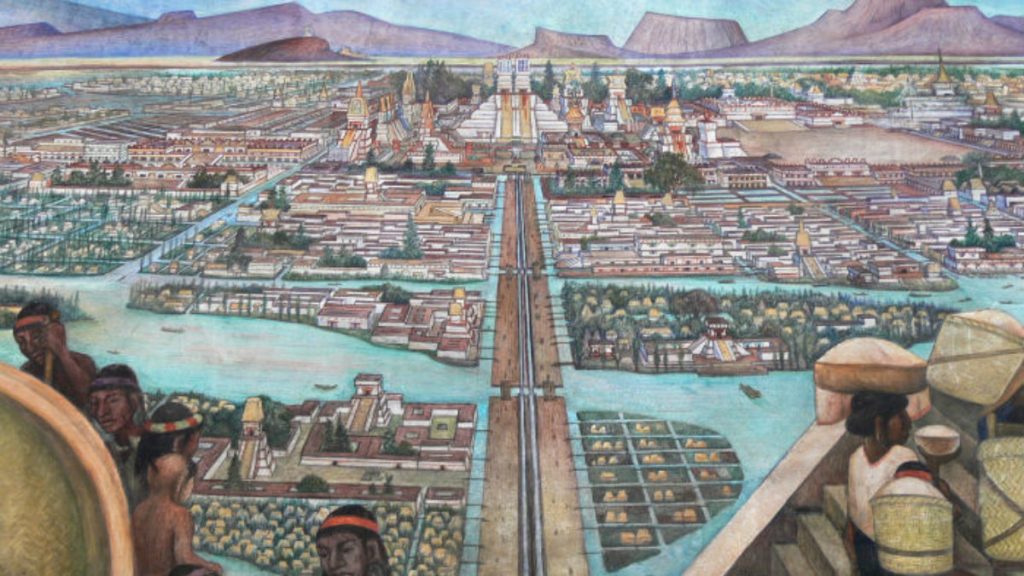
However, although the chinampa is generally associated with the Aztecs, and the Aztecs would practice chinampa agriculture on a large scale, they were not the ones to invent it. The earliest solid evidence of the chinampa dates back to what is known as the middle post-classical period (1150 AD – 1350 AD), an era before the Aztec empire took shape. And the chinampa does not originate on the salty waters of Lake Texcoco, but rather on the sweet waters of Lake Xochimilco, a little bit south of the future Aztec capital of Tenochtitlán. The Xochimilcans first settled in the Mexican Basin in 900 BC, and by 900 AD they built their first city and began to exercise influence over their surrounding area. One of the leaders of this people, Acatonallo, is credited by the Xochimilcans with creating the chinampa. In the 15th century, the Aztecs invaded Xochimilco, bringing the population into their empire. This meant that the Aztecs could take advantage of the incredibly productive chinampa systems in the form of a tax, and also led to the Aztecs creating their own extensive system of chinampas on Lake Texcoco, with evidence pointing to a large State led programme for expansion of the chinampas. By the time the Spanish arrived, there is believed to have been between 1500 – 2000 hectares of chinampa in the Mexican Basin.
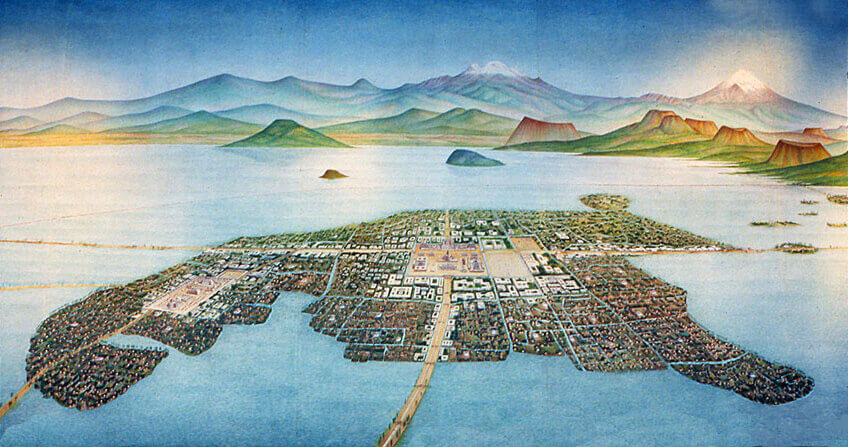
Making the Chinampa
Chinamapa is a náhuatl word that can be translated as ‘interwoven with reeds’, describing part of the process by which the chinampas are created. To begin with, wooden stakes made from the water resistant willow tree are driven into the lake, marking out the shape of a long rectangle. Ancient chinampas are thought to have generally been around 30m x 2.5m. The next step was to weave fences between these wooden posts, using either the branches of the willow tree, or dried reeds. Once the fences were secure, and the rectangle closed, the space inside would be filled with alternating layers of organic materials and mud from the bottom of the lake. The space was then filled to about two meters above the level of the water. The final step of securing the islands was to plant willow (or sometimes cypress) trees around the whole of the chinampa, with the roots holding the mud in place and connecting the chinampa with the ground below the lake floor. The trees also acted as windbreaks to protect the plants from the sometimes fierce north winds. With this design the Xochimilcans managed to create cultivable land surrounded by all the water and fertilizer they would ever need.
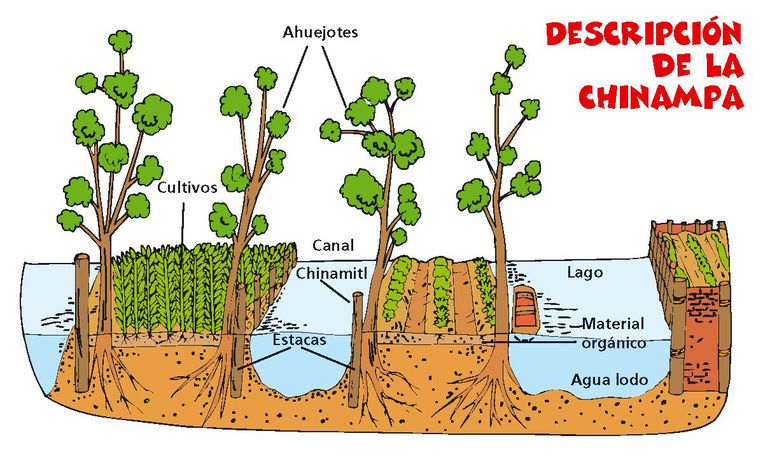
Along with the floating islands themselves, a series of multi-purpose canals and ditches were created. The canals would allow for the easy movement of canoes from island to island; while ditches were dug to allow water to flow into the chinampa, making sure that all crops had instant access. Over time these ditches would be filled with sediments and human waste products, and so were periodically cleared. Sediments would be dredged up to the top of the chinampa, clearing the ditches and renewing the fertility of the land. And this is a key element of the chinampa; the sediments and the mud that is scooped up from the lake is an incredibly fertile mix of all of the minerals brought to the lakes by the inflowing rivers, as well as all of the decomposing remains of aquatic life. The abundance of fertile mud surrounding these farmers meant that they could farm continually, without the need to leave the land fallow. This made the chinampa one of the most productive techniques of its day; with one hectare of chinampa being able to feed 20 individuals. Planted on top of the chinampas were the staple mesoamerican crops: corn, beans, squash, chilli, tomatoes, amaranth, etc. This huge diversity of crops was another element of the incredible productivity of the chinampa. A modern chinampa in San Andrés Mixquic, a small community located about 40 kilometres from Mexico City, was found to have 146 different plant species, including 51 separate domesticated plants. These polycultural systems not only serve as biological reserves for local flora and fauna, but also allowed for much denser levels of planting than is practised in conventional farming today.
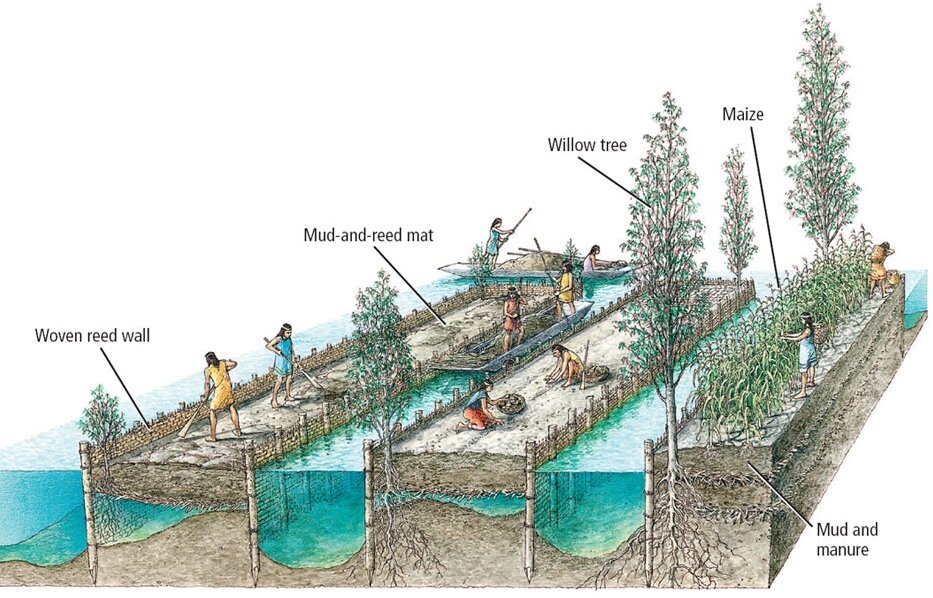
As well as being highly productive, the ancient chinampa was also in harmony with its natural surroundings. Although human beings had a large impact on their environment, creating artificial islands on these shallow waters, it was not to the detriment to the web of life that had previously existed there. If anything it had a net positive effect. The chinampas created new microclimates for different kinds of species to move in; new ecologically niches which are the basis of bio-diversity. As mentioned, on the chinampas were a huge amount of trees, many dozens of different crops, and space for all kinds of wild plants – providing habitat and food for thousands of creatures. One clear example is the willow tree, planted in their thousands to hold the chinampas together, whose roots create the perfect conditions for aquatic animal to reproduce. Some of the animals that could be found in the waters of the Mexican Basin include; the acocils (a type of crayfish), the montezuma leopard frog, hundreds of species of migratory birds, and the axolote (the strange looking relative of the salamander). And its not just plants and animals that prospered in the chinampas, studies show that cultivated chinampa soil has a greater level of microbial biodiversity than non-cultivated soil.3
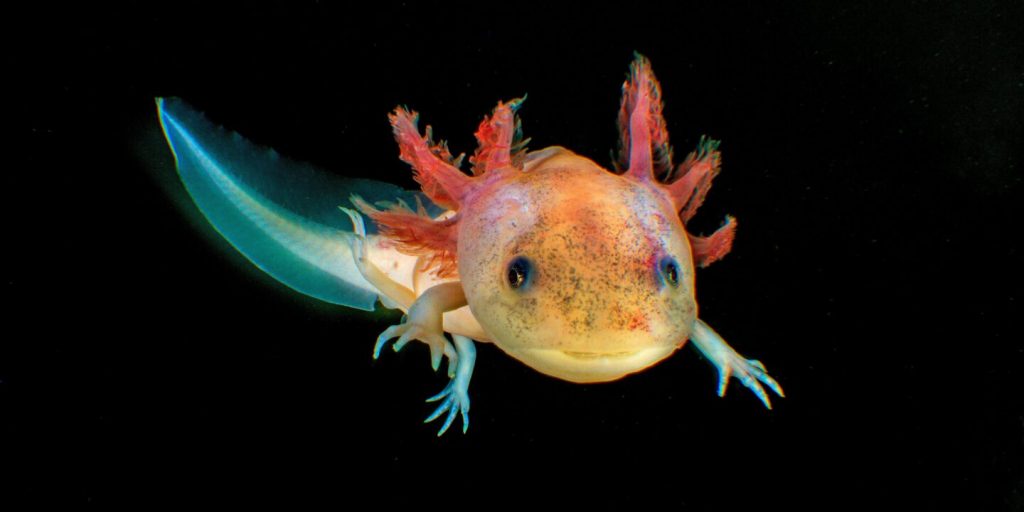
This ancient system of land management proves that with simple yet intelligent designs, we can feed huge amount of people and have a positive impact on our environment. Some important elements of this method were; the fact that it was a polycultural system; that it was powered by human labour; that the communities lived entirely from what they found in their local surroundings (not introducing toxic or non-biodegradable objects into their environments); and that it was a relatively closed systems, with only a small amount of the produce being transported to the commercial centres). Most chinampas were farmed by families living in adjacent houses, and almost all the fertility that was taken from the water was returned to the water.
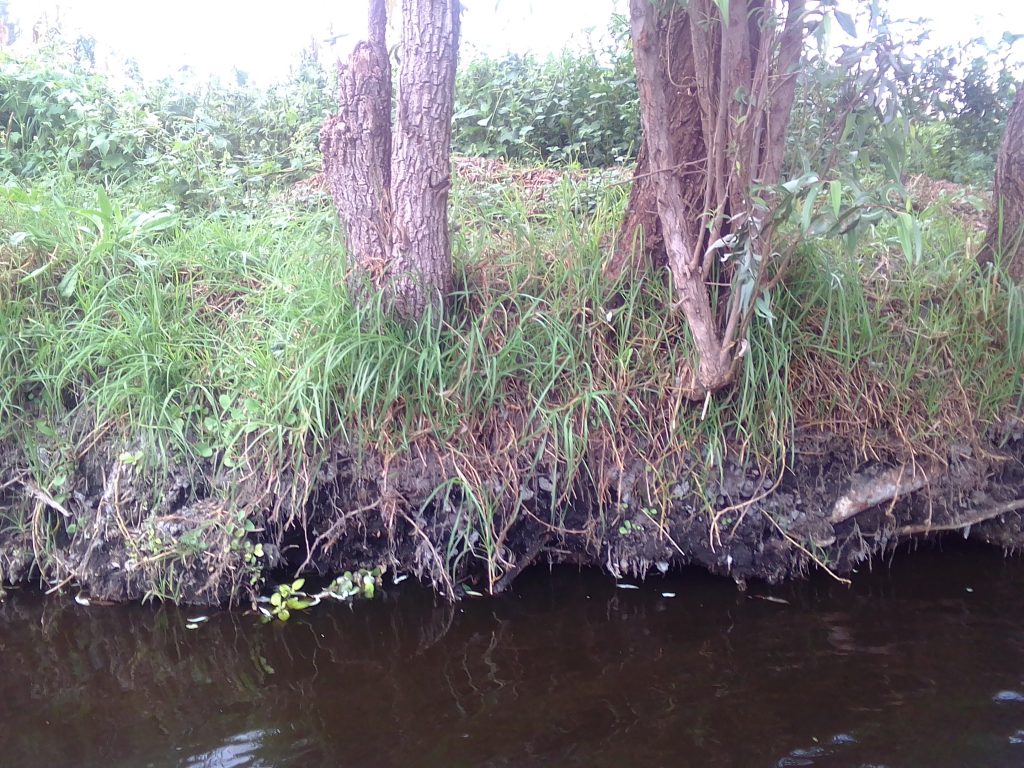
Modern Development
The Spanish conquest of Mexico meant the decline of the chinampa and the near total destruction of the once vibrant ecosystem of the Mexican Basin. The Spanish had little understanding or interest in this productive and sustainable form of agriculture. Many of the old community lands were claimed by Spanish invaders, who formed huge haciendas (estates) worked by local people who became trapped in a relationship of debt-peonage. This had an immediate effect on the diversity of the chinampa. While the ancient chinampas were self-sufficient polycultural farms, with hundreds of different plants on each island, the hacienda generally focussed on a single cash crop to be exported back to Europe. And this immediate decline in diversity was just the beginning. From the very earliest days of the invasion, the Spanish began deforesting the surrounding mountains. This deforestation lead to an increase in erosion, and so an increase in the amount of mud and sediments deposited into the lakes in the valley, making the already shallow lakes even shallower. Compounding this problem was the fact that the Spanish had not maintained the Aztec drainage systems. This disregard for the finely balanced local conditions meant that the capital city of New Spain, built on top of the old Aztec capital Tenochtitlán, would be plagued by periodic flooding for the next several centuries.
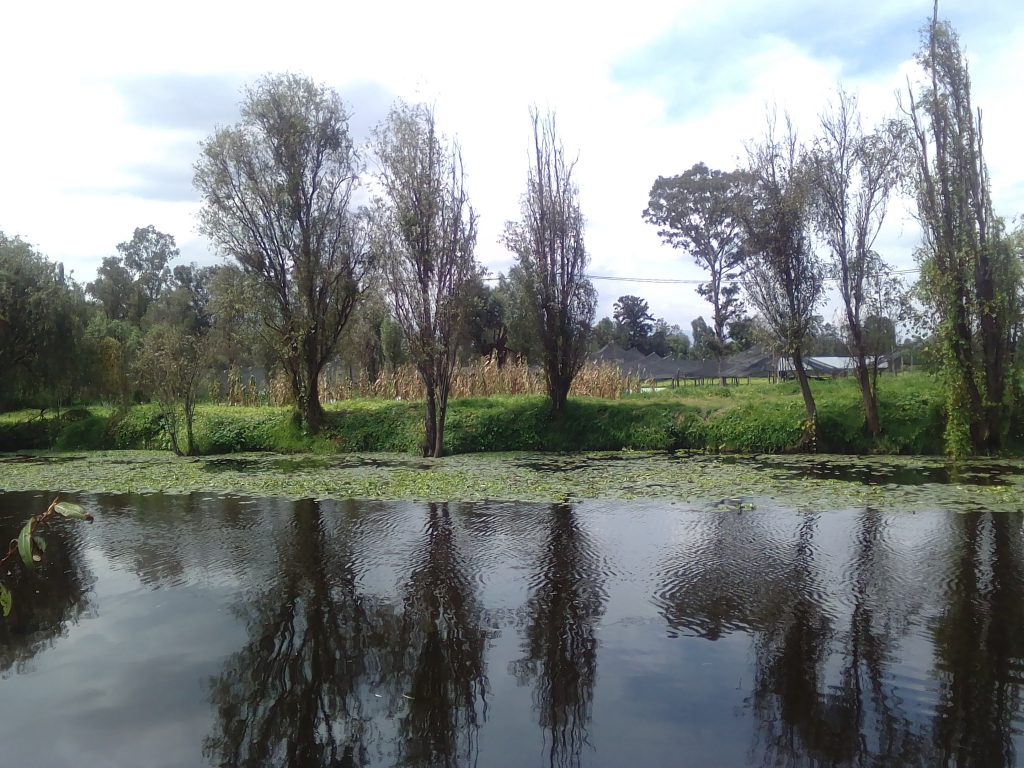
The problems were so bad after the first hundred years that the Spanish considered moving their capital to dry land. But after protests from landlords, who already had huge estates in Lake Texcoco, the Spanish instead decided upon a different course; to drain the great lakes of the Mexican Basin of all their waters, beginning a long series of infrastructure projects that would go on until the early 20th century. In 1607, the Spanish colonial government had 4,500 indigenous forced labourers build a desagüe – 12 kilometres of ditches and tunnels. This had a short term impact on flooding, but it quickly fell into disrepair. The mantel would be taken up by the post-independent Mexican government, without much success, and then even an invading US army drew up plans for massive drainage infrastructure as they occupied Mexican city in the middle of the 19th century. But the flooding continued. However, though severe flooding would persist until the early 20th century, the waters did begin to recede, and so the city began to expand – displacing local communities, destroying natural habitats. It was military dictator Porfirio Diaz, supported by English and US investors, who made the final push – building the necessary hydraulic infrastructure needed and dispossessing enough local communities of their land and water – to complete the centuries long effort to drain the once vast lakes of the Mexican Basin. They had done it – mission successful! However, following this success, new problems arose. For one, there was no more water.

Today Mexico City suffers from some of the worst water shortages of any city in the world. About 70% of the cities 21 million inhabitants suffer from some level water scarcity. About 20% of the population only get one or two hours of water every few days. The situation is so bad that in February 2010 the Mexican government began a information campaign warning people that ‘the city may run out of water’.4 So after trying for centuries to direct water out of the Mexican Valley, they would begin a new project – directing water back into the Mexican Valley. The most important external source of water is the Cutzamala reservoir, 120km away. The Mexican government pays little attention to the Mazahua, the indigenous people of Cuatzamala, who are struggling against the syphoning of their precious water supply. Along with these faraway reservoirs, much of Mexico City’s water is pumped up from aquifers underneath the city itself. But the loss of groundwater is leading to serious structural problems, namely that the city is slowly sinking into the earth at a rate of almost 10cm a year. Ciudad de Mexico – a city built on a lake, in which millions of people don’t have access to water; a city sinking under the weight of its own short sightedness.

The level of failure on the part of the city planners borders on absurdity. Even today Mexico City would have enough water flowing through it to supply its enormous population, if the whole infrastructure of the city hadn’t been built to direct water out of the city. When it rains, instead of supplying people with the water they need, or replenishing depleted ground water reserves, the water flows through the network of canals, tunnels and sewers out of the valley – exactly as planned. Along with the human consequences of millions of people not having access to water, the destruction of this once vibrant and abundant natural world is an immense tragedy. In place of this erstwhile natural paradise, is a bloated monster of a city, sucking the life out of, and excreting pollution into, its surroundings. The contrast between the old and the new cities is stark. A few centuries after arriving in this magnificent lake city, surrounded on all sides by a vibrant nature, filled with thousands of human made islands providing the city with life and allowing the nature around it to flourish, the Spanish had managed to destroy the city, drain the lake, and decimate the ecosystem. And when looking at modern development in general, we see that Mexico City is not some outlier, an exception to otherwise well planned and well integrated human settlements and infrastructure, it is rather typical of the way we have come to organise ourselves in the modern world. Nature is seen as an obstacle to overcome, as base materials to be exploited, as something to be transformed to satisfy insatiable human desires. But is this really the world we want to create?
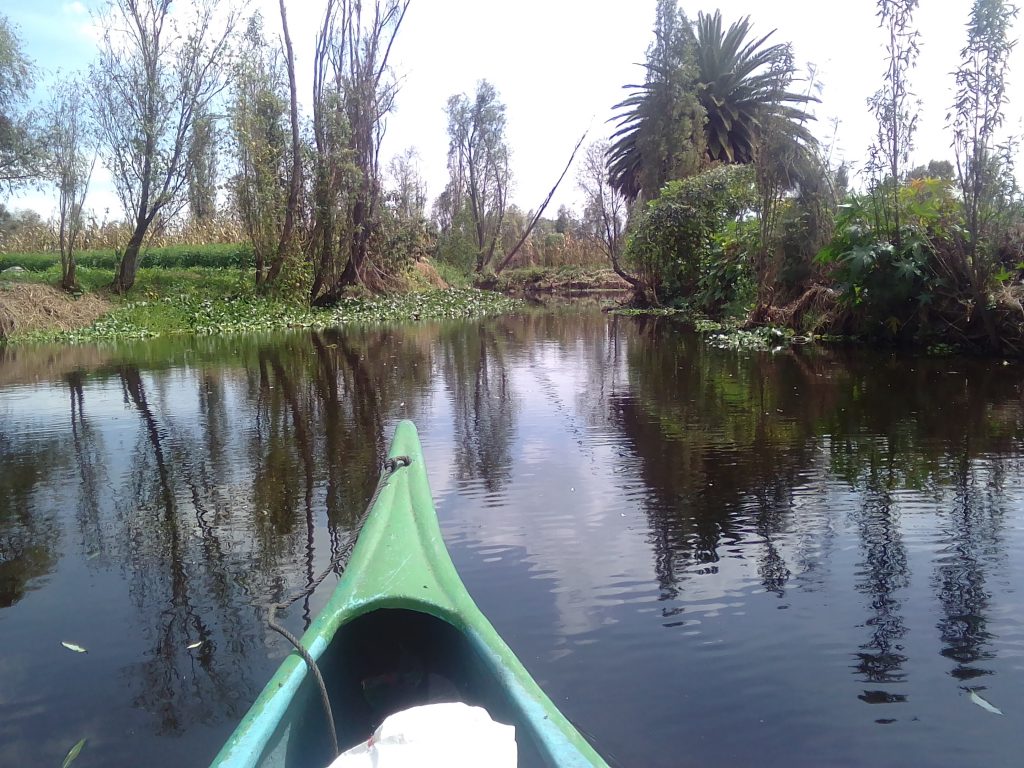
The century long failures in the Mexican Basin is also a clear example of the way modern society attempts to deal with problems of its own making. The original problem was the disruption of the ecosystem, chopping down the trees that were preventing severe flooding in the valley. After this initial mistake, and after observing the increased erosion, it wouldn’t have taken a genius to understanding that the surrounding mountains need to be reforested, and more respect and care afforded to the natural environment, to prevent further flooding. But the modern mind, so focused on material gain, seems unwilling or incapable of finding a balance with nature. Instead, puffed up with pride, we flatly refuse to get to the heart of the matter and instead look for technological fixes. We are like a person sick from over eating who goes to a doctor for some pills so that they can continue to over eat. We imagine that with enough technological transformation, we will fix the imbalances we have created in the natural world. But in doing so we merely create more problems for ourselves. We transform nature in service of our material desires, according to our miniscule understanding of the infinity of the natural world, thereby heaping suffering upon ourselves and upon future generations. It is time to take responsibility for ourselves, to get to the root of the present crisis; overconsumption/overexploitation, greed and short sightedness.
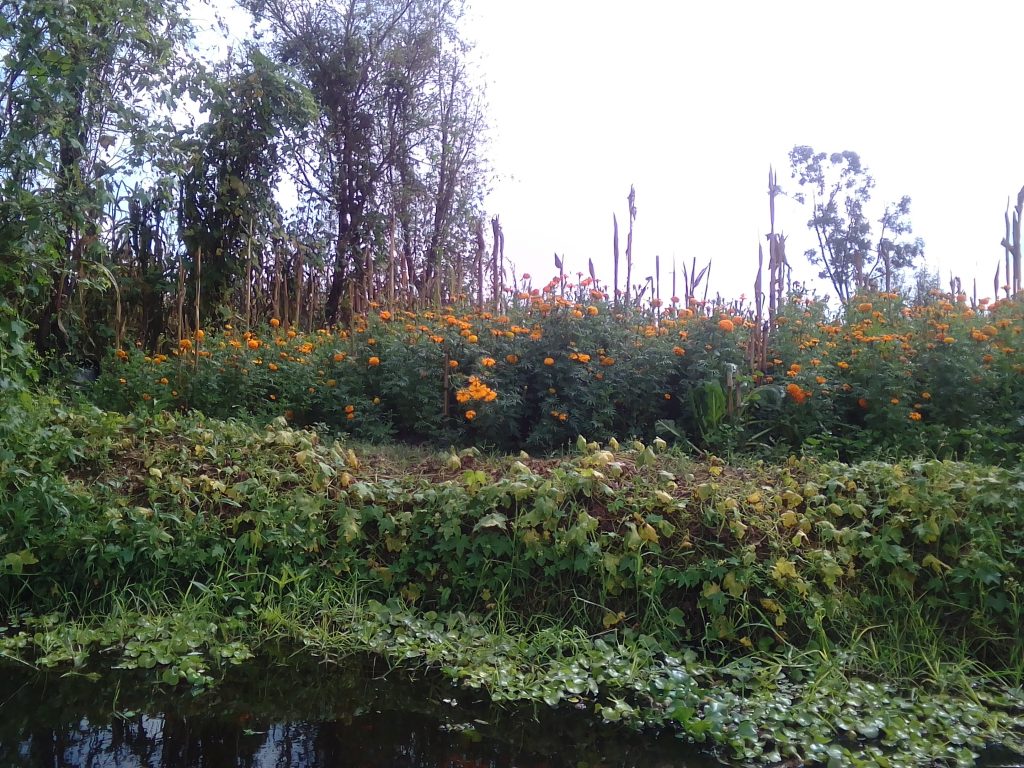
Xochimilco Today
While the vast majority of the water of the once great lakes of the Mexican Basin have been drained, one little corner has survived to our day; Xochimilco, the birthplace of the chinampa. About an hour bus ride from the centre of Mexico city, Xochimilco has been joined to the capital by the all consuming urban sprawl, but still retains its own unique feeling. It is here that the last of the chinampas can be found. Connected by about 170km of canals, these floating islands are the living heritage of the chinampa culture, and in recognition of this fact Xochimilco was named as a World Heritage Site by UNESCO in 1987. Today Xochimilco is a popular tourist attraction, a place where people from the city come on Sundays to get drunk and ride around on a gondola. Environmentally Xochimilco is also of vital importance to Mexico City; providing the city with water and oxygen, and acting as carbon sink for the highly polluted urban centre. It is also an important habitat for many species of aquatic animals; and for many once abundant species, it acts as their final refuge. There are only about 50 to 1000 of the strange and beautiful axolotls left in the wild, all of them in Xochimilco. It is also an important stopping point for many species of migratory birds, with about 350 different species passing through it every year. Xochimilco is also important for many residents of the city, as it is one of their only accessible windows into the natural world.
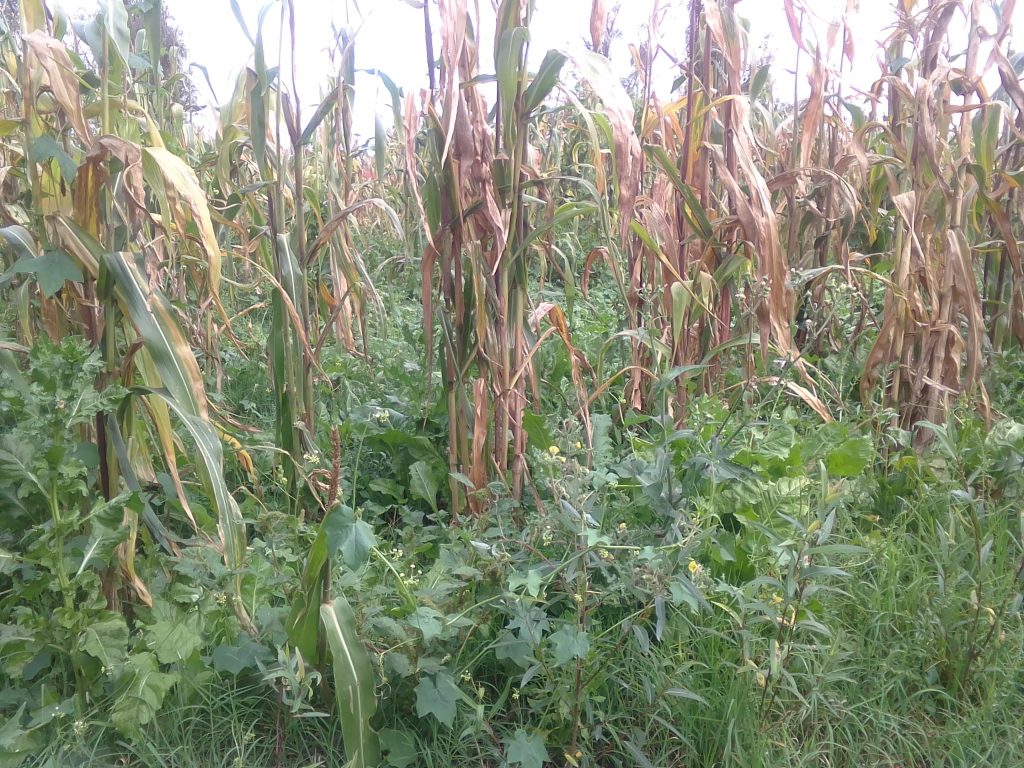
But although Xochilmilco is of great cultural and environmental importance, it is also beset on all sides with problems. Firstly, as can be expected from a body of water on the edge of Mexico City, with the problem of pollution. And it is not only urban pollution that Xochimilco has to deal with. In the 1990’s the heavy use of agricultural pesticides had a tremendous effect on an already unbalanced ecosystem. I was told that the use of these chemicals has been phased out, but many of them take decades (or even longer) to fully break down, and until then circulate through the body of nature. Another problem is the introduction of invasive species in the 20th century. The most serious difficulty is posed by the tilapia, an edible fish introduced in the 1960’s. Since their introduction, they have multiplied like crazy, becoming the dominant species, occupying the space and consuming the resources once taken up by local species. They have they had a very detrimental effect on amphibians, such as the axolotls, by eating their eggs, as well as a detrimental effect on the chinampas themselves, because they dig away at the mud surrounding the roots of the willow trees to create more favourable conditions for their reproduction. It is partly for this reason that many of the modern chinampas aren’t being made in the traditional manner (with willow trees and organic materials) but rather with steel. But whereas the ancient chinampa’s organic materials became solid walls by allowing for accumulation of sediments, embedding themselves in the lake topology, the metal chinampas will ultimately degrade and need to be replaced.
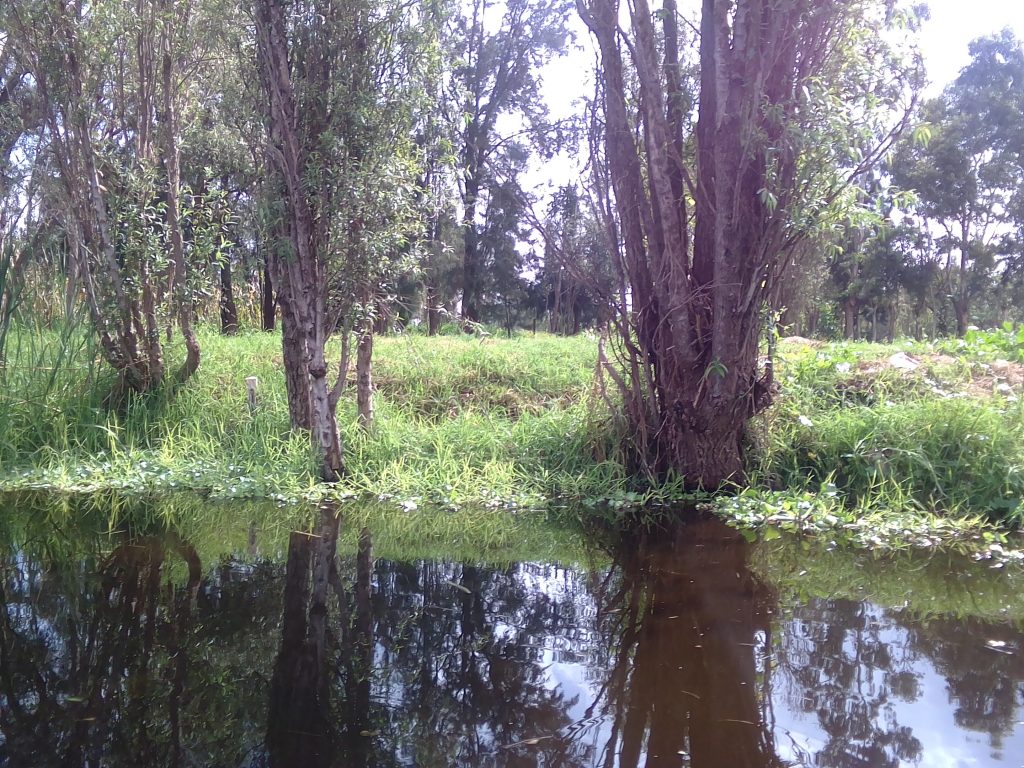
Along with these environmental problems, the chinampa culture is facing many of the same social problems facing the majority of farming communities worldwide. Large scale mechanised farming, as well as the price of food being kept artificially low by government subsidies, have made life as a small natural farmer near impossible. Because of this, many of the children of the chinamperos have decided to move to the city, leaving many of the chinampas empty. This exodus has meant a break in tradition, and the loss of the knowledge handed down for many centuries. Many of those who have stayed have stopped farming the land, instead opening restaurants, guest houses, or gondola businesses to serve the influx of tourists from the city. While this is an understandable move from people who want to stay in Xochimilco and realise how difficult it is to be a small farmer, it has had a pretty negative impact on the local environment. Huge crowds of people (of quite often drunk people) takes up vital space in this shrinking habitat, generates large amounts of litter, and expect more heavy duty infrastructure than would be needed for local farming communities. And on a social level, it means that Xochimilco is becoming a resort town, with huge numbers of tourists on the weekend, and empty guest houses and restaurants during the week. Another effect of basing the local economy on tourism is that the most essential element of the chinampa culture is lost; the agricultural knowledge that make a harmonious and self-sufficient life possible. The final problem facing xochimilco we can mention here is the lack of interest by the central government. Many people wonder where the funding provided by UNESCO for the upkeep of this world heritage site is being spent, as many of the most basic works (maintenance of the chinampas, removing plastic from the canals, unblocking of canals, etc.) are not being done.
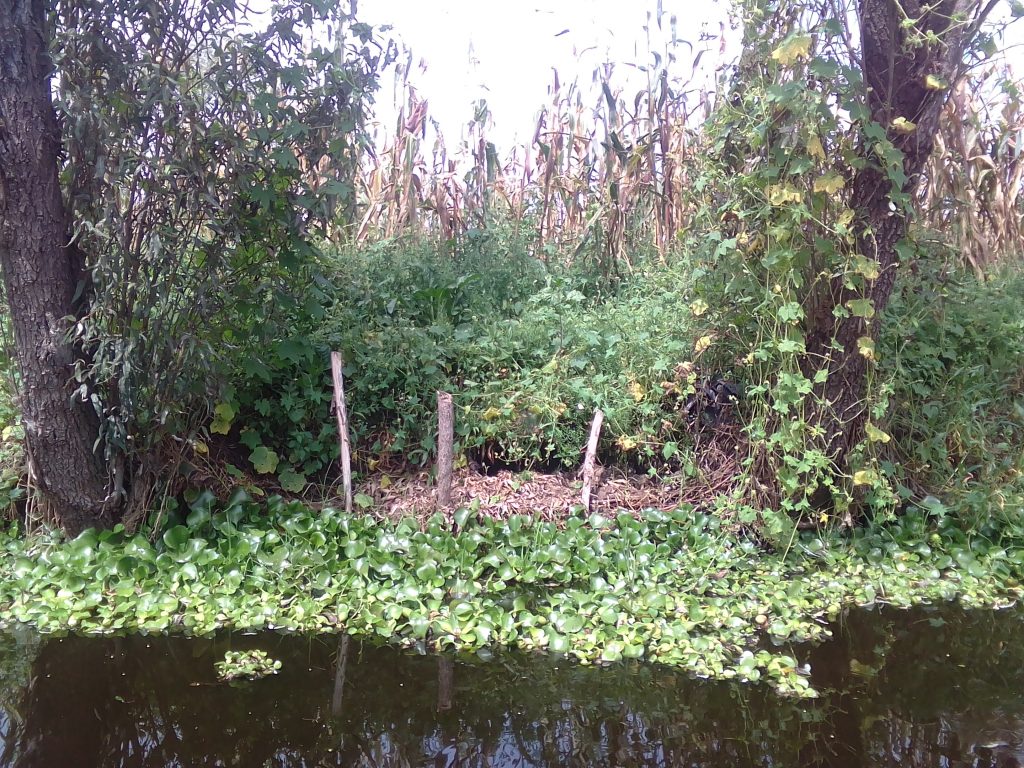
Semillas de la Chinampa & Don Nicho
But although the central government shows little interest in survival of the chinampa tradition, organised groups from the local community do. Recognising that the central government cannot be relied upon to maintain the tradition alive, farmers, ecologists, and other members of the local community have decided to take the matters into their own hands, and formed an alliance for the preservation and development of chinampa culture. This alliance is called Semillas de la Chinampa [‘Seeds of the Chinamapa’], and this is taken from their website;
‘The Semillas de la Chinampa collective was formed with a strong educational vocation in terms of keeping alive local knowledge about the heritage and agriculture of Chinampa. As members of the community, we seek to promote the knowledge of chinampera agriculture among the local population and visitors, since there is concern about the loss of interest of the new generations in practising agriculture, and the risk of losing all that cultural heritage and associated knowledge.’
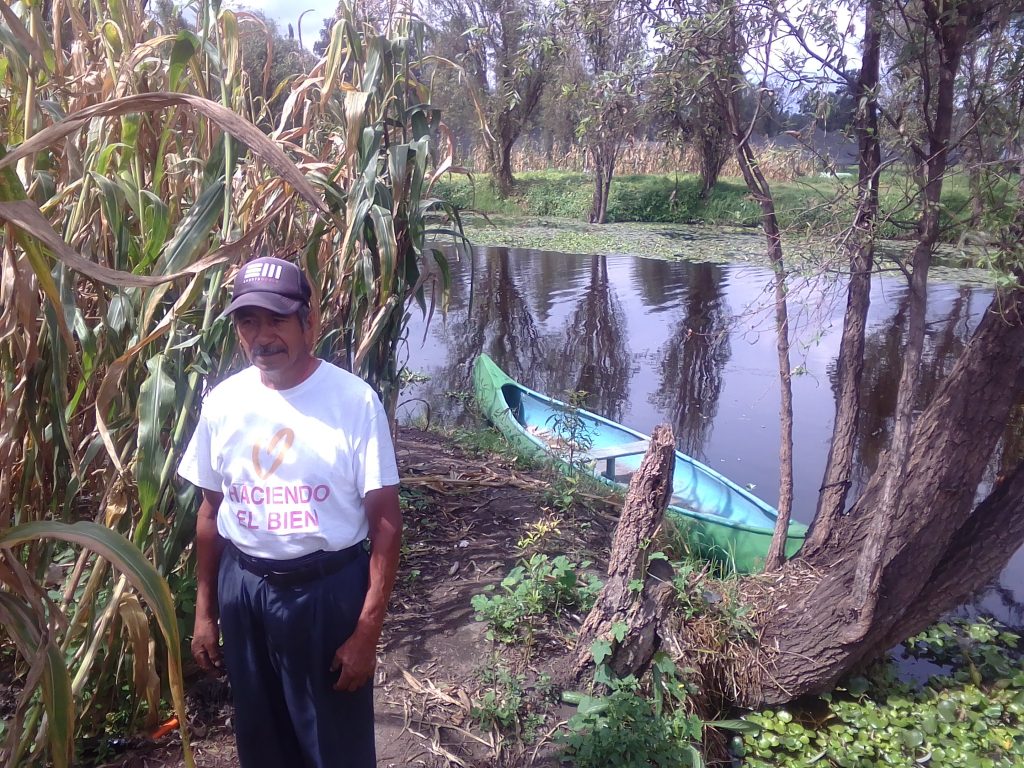
In line with this goal, Semillas de la Chinampa organising a variety of different events for people to learn more about the chinampa: school trips, reforestation actions, and other types of volunteer days. In the latter part of 2021, I got in contact with Semillas de la Chinampa and was warmly received by Don Nicho, veteran chimpanero, who gave me a tour of some of the chinampas he was working, explained to me the history and current situation of the chinampa (much of which informs what you have already read), and told me about the huge amount of different actions that he, and other in the ‘grand alliance’ of Xochimilcans, are doing to save the chinampa.
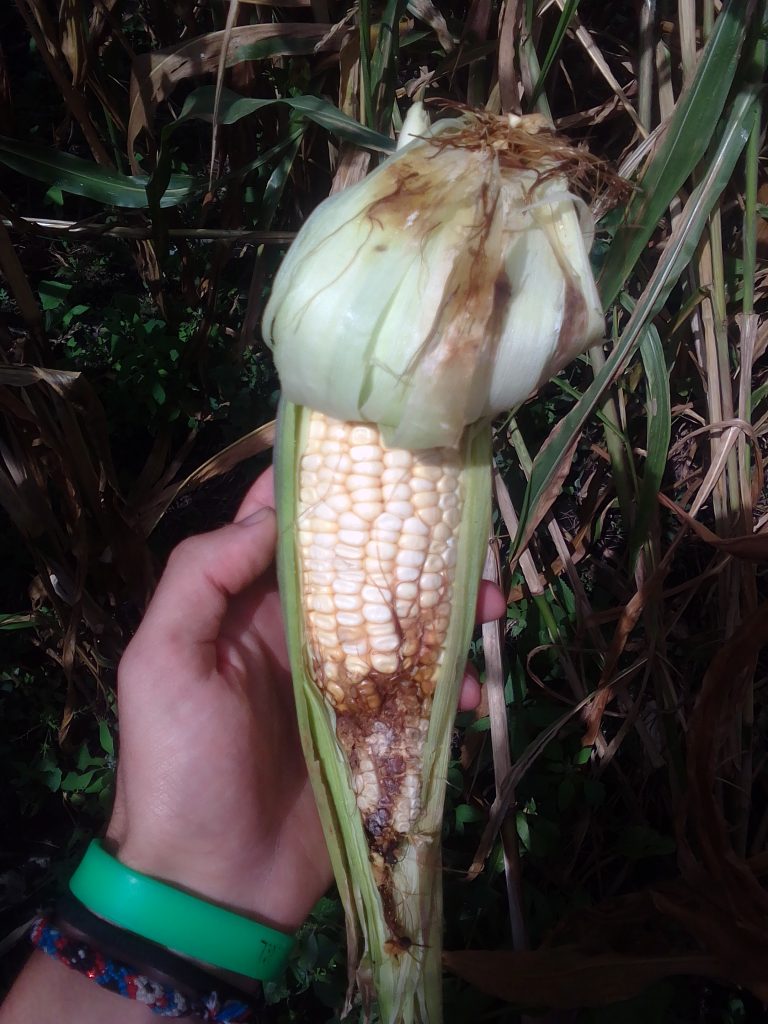
As we glided down the canal on Don Nicho’s canoe, herons kept us in their gaze, before, when the time was right, taking flight. The first chinampa we arrived at was full of maize, ripe for the picking. The corn harvest is traditionally one of the most important dates in the mesoamerican calender, so I glad to be taking part, even if all the best ears were already harvested by a group of school children who were there a few days before me. The little bits of income provided by school trips and other types of ‘ecotourism’ were one of the things that made old style chinampa farming possible, he told me. He distinguished between normal tourism, a load of people coming out on the weekend to eat and get drunk, and ecotourism, people coming and learning about the chinampa and the environment. While the latter supports local community and ecosystem, the former leads to their disintegration. But the chinampas are obviously not just for show, and Don Nicho has a network of subscribers who buy boxes of vegetables from him every week (and regularly come and visit the chinampas to see where their food is grown) in a Community Supported Agriculture type arrangement. Needless to say, the chinampas are cultivated without the use of chemical fertilizers, pesticides or heavy machinery. Just as in old times the chinampas, are highly productive, and allow for continuous cultivation. The most important of the summer crops is corn, while in winter a variety of different vegetables are grown: cauliflower, broccoli, beets, carrots, potatoes, and radish. The seeds of these vegetables are planted in the super fertile chapín (little squares of lake sludge, partially dried in the sun), which are then planted in the ground after germination. Making sure everything is nicely pollinated, and providing a supply of precious honey and propolis, are hives of buzzing bees.
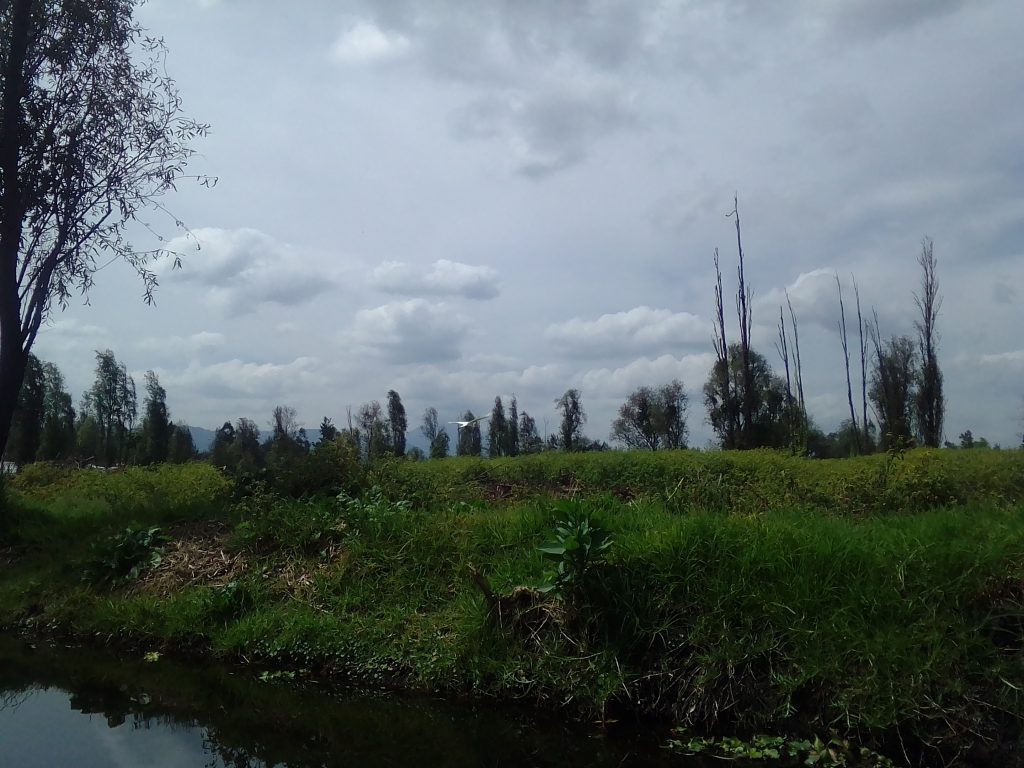
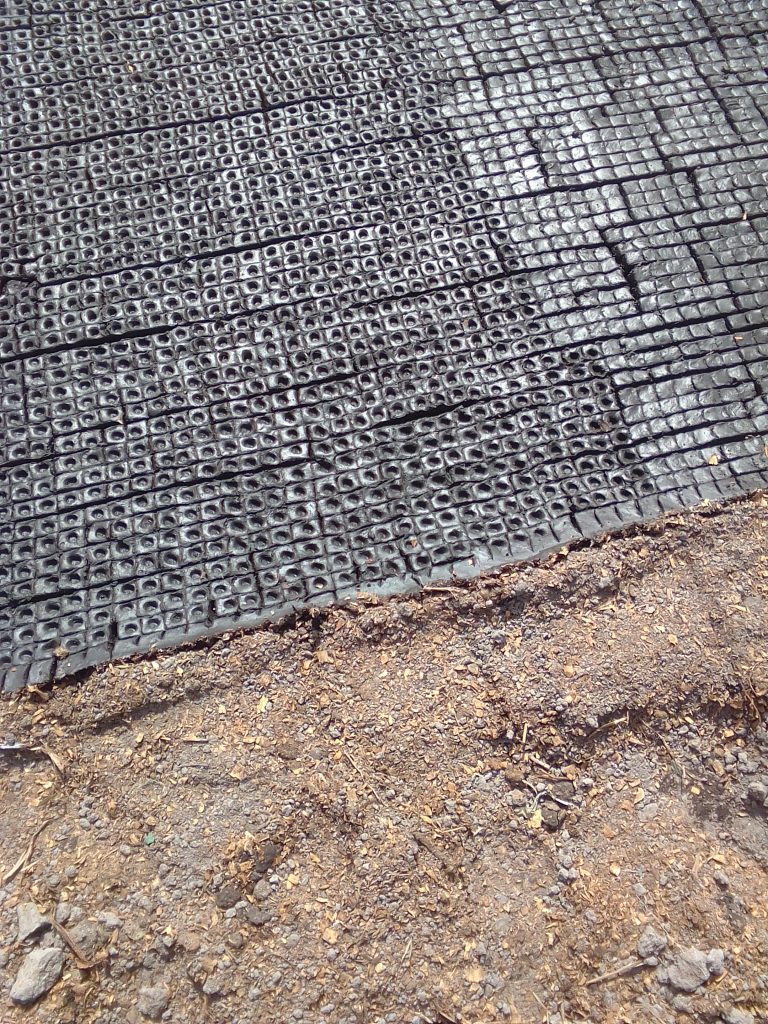
Don Nicho tells me that the chinamperos aim to recuperate the old ways, but this does not mean rejection of modern scientific knowledge. Instead the aim is to create a ‘new science’, one that does not reject the knowledge of tradition, but augments it. He says that he has been working closely with academics in a mutually beneficial relationship. While the academics can experience the ancient knowledge of the Xochimilcans first hand, they also bring new knowledge and initiatives with them. One such collaboration resulted in the formation of a seed bank in Xochimilco, saving many of the native chinampero species from extinction. Don Nicho says he has collected most of these seeds from old women who have kept alive the ancient cultivars of their ancestors in their small garden plots. Another new development (although it is certainly possible that the ancient Xochilmilcans were doing something similar) was the use of vermiculture composting; huge piles of organic matter, ashes, carbon being worked over by worms. These piles add to the fertility already provided by the lake sludge.
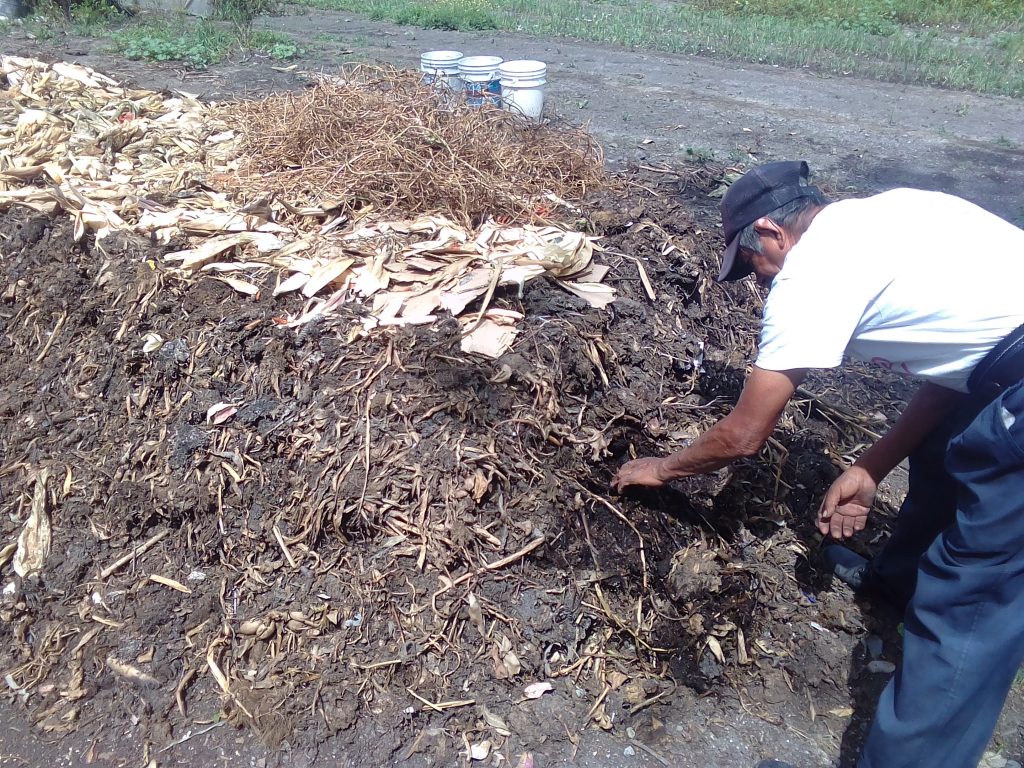
Combining with these agricultural action are a variety of environmental and social initiatives. One important action is to create reserves for some of the endangered animals. This consists of opening up the ditches in between the chinampas, which have long since been filled with sediment, and putting water filters between the canals and the ditches. These filters not only clean the water as it enters the ditches, ensuring an unpolluted aquatic habitat and clean water for irrigation, but also block the tilapias. The ditches then act as a perfect nursery space for the endangered amphibians. Other actions undertaken by Semillas de la Chinampa are things like: large scale plastic clean ups with dozens of volunteers, reforestation (planting willows at the edges of the many chinampas that don’t have them), as well as the opening of blocked canals (which requires a lot of petitioning of local government to provide the necessary equipment). Don Nicho also says he wants to re-establish the old tradition of chinampa making, with organic materials. Finally an important social initiative is the creation of a tool co-operative; a collectively own set of tools that can make the costs of being a small farmer more affordable.
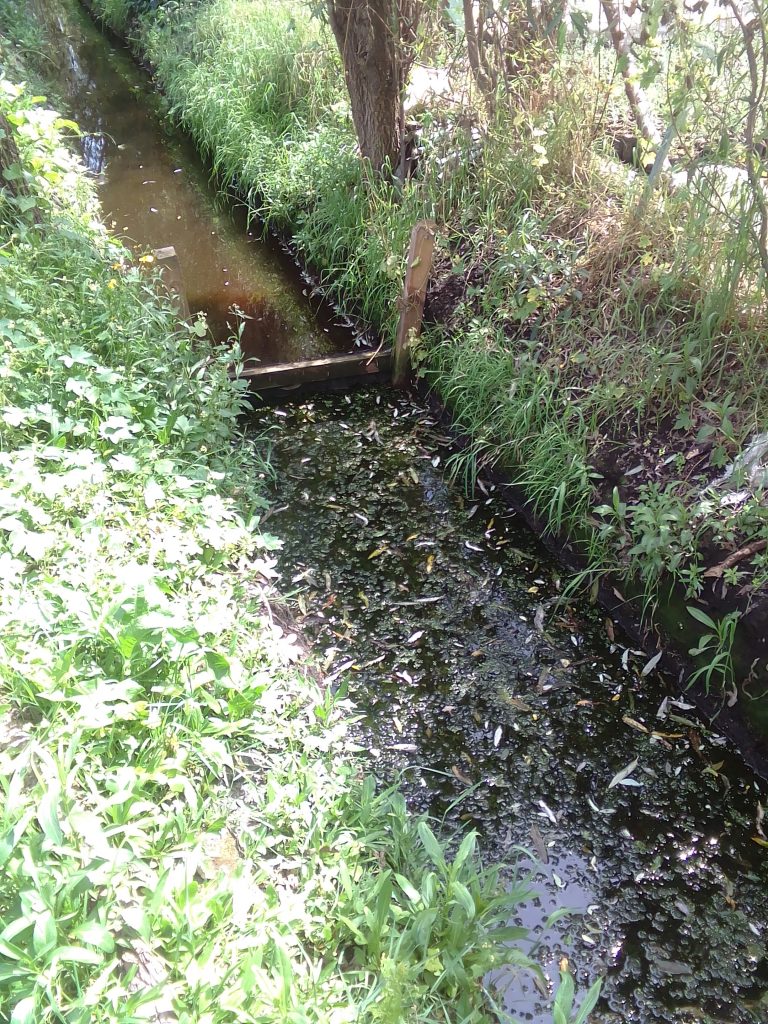
And this tool co-op is just the beginning of a large process of the reformation of the chinampero community. Don Nicho told me that the most important step in preserving the chinampa is the recreation of a strong community. One of the main problems is that Xochimilco is not governed by local people, but by far away politicians. Politicians who are not interested in the prosperity of the local community and ecosystem. He says that the first and most important step is putting the government of community life back in the hands of the community, but for this to happen the community first needs to reorganise itself. Don Nicho said that this is how Xochilmilco was organised in the past, and many of the problems started with the interference of central government. But he is also not advocating a simple return to the old ways, as he said that the old ways were the local community being run by local village authorities, and now things needed to be organised by community as a whole.
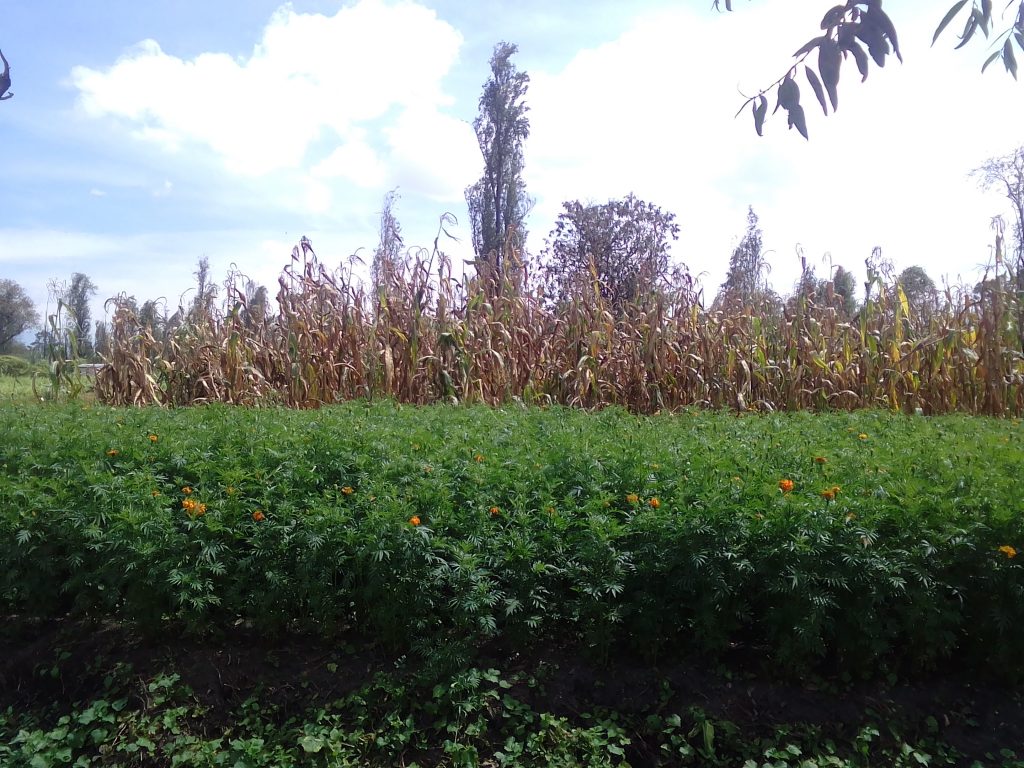
The development of community has different elements, and Don Nicho told me some of his plans for the future. For the creation of an shared economy, Semillas de la Chinampa are setting up a chinamperos co-operative, which will have a shop in Mexico city. While individual farmers selling their products at the market is economically unviable in present circumstances, the banding together of local farmers to sell their goods makes things easier – as well as cultivating a sense of solidarity and a sense of shared destiny with in the community. Another plan is to set up a chinampero school, a site of teaching and learning of the ancient knowledge and techniques, as well as a place to experiment with new methods. With the combined effect of all these initiatives, Don Nicho hopes that the chinampero culture of Xochimilco will be revived and flourish for another 600 years.
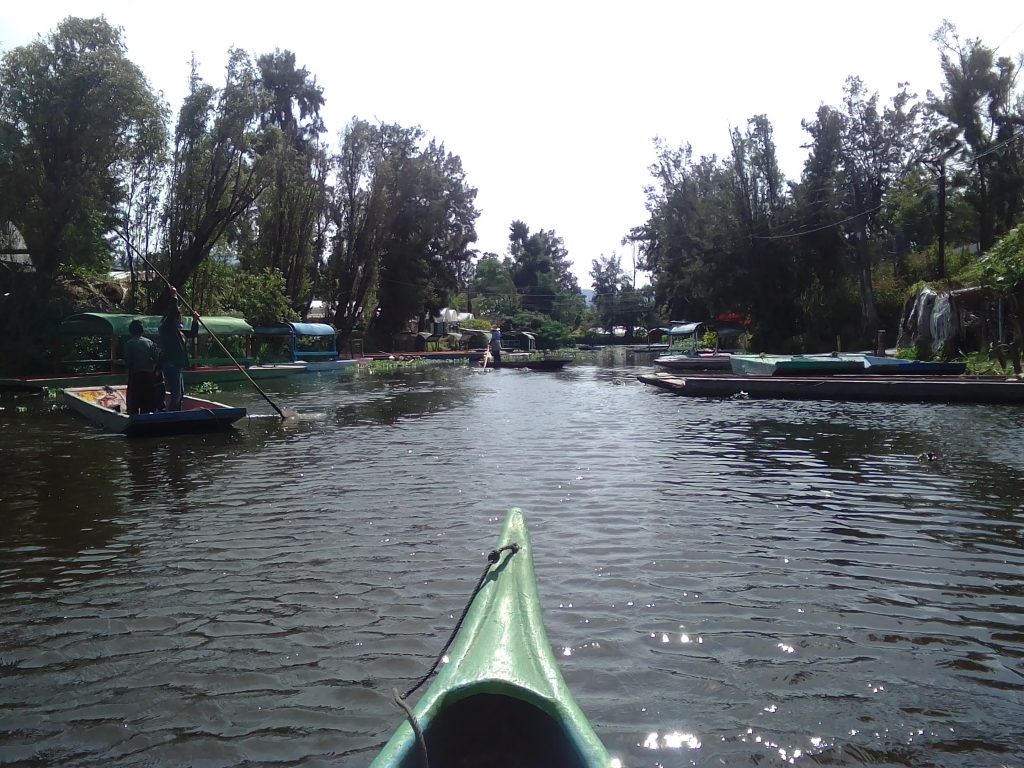
Many thanks to Don Nicho for showing me around the Chinampas 🙂
For more information:
http://semillasdelachinampa.com/
1 http://large.stanford.edu/courses/2015/ph240/verso2/
2 Embarcadero-Jiménez, S., Rivera-Orduña, F.N. & Wang, E.T. Bacterial communities estimated by pyrosequencing in the soils of chinampa, a traditional sustainable agro-ecosystem in Mexico. J Soils Sediments16, 1001–1011 (2016).
3 Krebs M, 2009. “Water shortage in Mexico City could echo the global water issue”, Digital Journal. Retrieved 10 September 2011